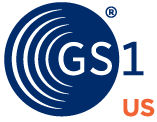-
According to reports from the U.S. Department of Commerce, the total amount of counterfeit goods sold each year is estimated to be around $1.7 trillion to $4.5 trillion. Counterfeit goods would have the tenth largest economy in the world if they were a country!
Businesses that sell products online are likely familiar with the impact counterfeit products have on sales and consumer safety.
Any trust that has been built up between a brand and its customers disappears when they are duped into purchasing inauthentic or unsafe products. Without trust, a business’s future sales and long-term brand loyalty can be immediately put in jeopardy.
It's important for reputable business owners to understand brand protection and take steps to thwart counterfeiters. Setting up the proper trademarks, copyrights, and patents to protect intellectual property support a good brand protection strategy. Additionally, for online brand protection, it’s critical to closely follow marketplace guidelines that call for the use of authentic product identification and barcodes. While this is not the only way to protect a brand from counterfeit, making this a part of your brand protection plan can instill confidence among your trading partners and customers and can help you defend your product listing against counterfeiters and hijackers.
-
Related Articles
What Risks Do Counterfeit Items Pose?
When angry customers confuse fake products for the real thing, it impacts more than sales; it can lead to dangerous outcomes. Fake products have consistently raised public health concerns. Phone chargers have caused fires, imitation cosmetics have caused serious allergic reactions, and subpar pet supplements have sickened animals.
On the sales side, there are two losers—the unsuspecting shopper who doesn’t get what they want and the well-meaning seller who suffers brand backlash. Online sellers may encounter product-listing hijacking where bad actors create similar listings that essentially steal sales away from the reputable brand and rip off the customer who never receives any products.
Recently, Amazon employed more than 15,000 people, including machine learning scientists, software developers, and expert investigators, who were dedicated to protecting customers and brands from counterfeit, fraud, and other forms of abuse. So far, they report that they have stopped more than 700,000 attempts of bad actors to create new accounts.
Fake Barcodes
Many experts believe that the rise of technology has contributed greatly to a criminals' ability to be successful at selling imitation goods. But technologies like QR codes and NFC can help businesses to protect their products and their reputation. For example, luxury handbags are often replicated by counterfeiters, but new radio frequency identification (RFID) and QR code programs that promote the product authentication through traceability can help prevent shoppers from winding up with knockoffs.
Counterfeit products are often difficult to spot because of identical packaging featuring the slightest change in branding or coloration. In addition to imitation packaging, counterfeited, duplicated, or fake barcodes dupe a shopper into a false sense of security. A counterfeiter may use a sophisticated printer to create a copy of the original product’s QR code for placement on their counterfeit product’s packaging. These fake barcodes may even still be scannable and offer up the original product’s website.
How GS1 US Barcodes Help
Leveraging the power of GS1 Standards, brands can add a layer of brand protection in two ways.
Identify Your Products Using GS1-Sourced Identification Numbers
Both traditional and online retailers are strongly recommending brands assign unique Global Trade Item Numbers (GTINs) to every product they sell to support their authentication procedures. Unique identification means that the number is assigned only to a singular product, links the brand with the product, and is not reused. This can often be a listing prerequisite, and without a verifiable GTIN®, the seller may be rejected or their listing can be suppressed.
For example, licensing a GS1 Company Prefix has long been seen by sellers on marketplaces such as Amazon as a helpful tool to be able to defend against counterfeiters and listing hijackers.
“UPCs from GS1 help to establish legitimacy, safeguard your business, and enable entry into retail outlets,” said Dr. Jennifer Ash, Director of MAX'IS Creations. “They are the single most protective factor to demonstrate that our product is our product.” Dr. Ash's son, Max, founded a successful mug company when he was 8 years old that sells into brick-and-mortar stores and major online retailers. Dr. Ash speaks publicly about the importance of securing trademarks, copyrights, and a GS1 Company Prefix to protect their original product idea against bad actors.
Share Data With Trading Partners to Mitigate the Flow of Counterfeit Goods
Once products are uniquely identified in the supply chain, meaning the brand is linked to the identifier and can be verified in the GS1 Database, sharing accurate product data about that product is critical for retailers to ensure brands are legitimate. Brands and retailers use accurate and complete data to trace source materials back to their point of origin. They can also track products from the moment they leave the factory floor. This ensures that the consumer gets a safe, quality product and that the barcode connects back to the true brand owner.
Get Your UPC Barcodes from GS1 US
Barcodes from GS1 US® provide an authentic way to uniquely identify your products and locations in the supply chain and in e-commerce.
Scale Up With a GS1 Company Prefix
A GS1 Company Prefix allows businesses to get multiple barcodes at a single time as well as identify locations and mixed cases, create coupons, and create higher levels of packaging like a case or pallet.
Start Small With a GS1 US GTIN
Barcodes issued by GS1 US uniquely identify a single retail product online and in retail stores around the world. If you have only a few products that need barcodes, this might be the most cost-effective option for your company.
Recommended Resources
Here are additional resources that might interest you:


